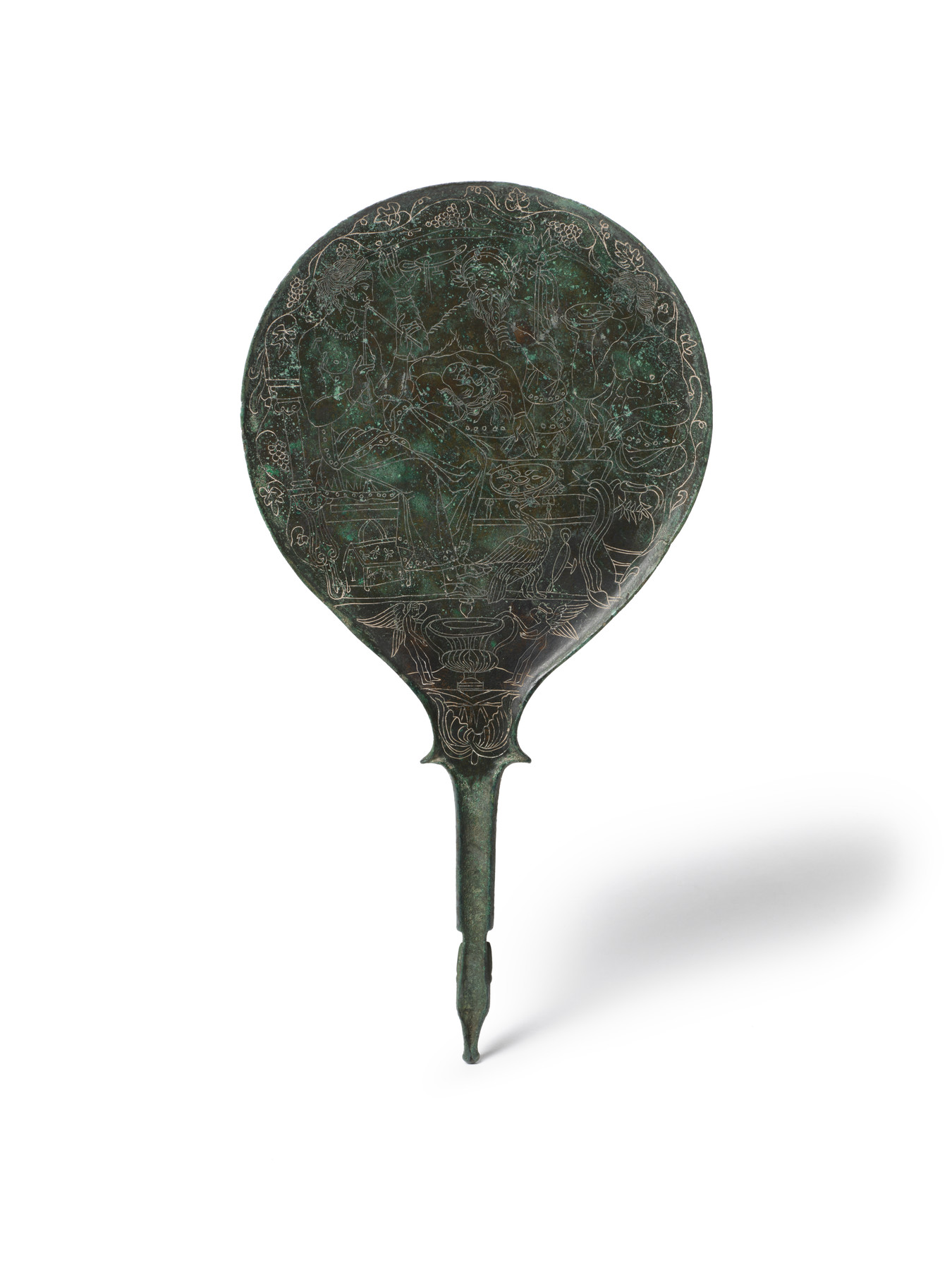Mirror with a Banquet Scene
The mirror is cast as one piece with its handle. The handle ends with an animal’s head. The edge, which is thicker than the body, carries a pattern of diagonal lines. The front of the handle has a cast stalk pattern, ending in a palmette at the top. Above the palmette at the bottom of the mirror surface is an incised acanthus pattern. The back of the mirror has incised decoration.
The incised scene shows four persons at a banquet. A flute girl sits at the foot of a table, playing. On the couch behind the table is a bearded, garlanded, older man holding a cup in his right hand, while his left arm is hooked around a thyrsis. A girl lies across his lap. At the head of the couch a younger man is seated, drinking from a cup. At the foot of the couch is an Ionic column. Around, under, and on the table are a chest, a bird, a patera, a kylix, and an amphora. Below the scene is a krater tended by two Erotes, and below that is a group of acanthus leaves. The scene, which is of Greek origin, also occurred on a lost relief mirror found at Praeneste.
Provenance
Provenance (from the French provenir, 'to come from/forth') is the chronology of the ownership, custody, or location of a historical object. Learn more about provenance at the Walters.
[Said to be from Palestrina, found in the Cista Pasinati, 1864]. Alessandro Castellani, Rome, by 1883, [mode of acquisition unknown]; Sale, Collection Alessandro Castellani, Hotel Drouot, Paris, May 1884, p. 48, lot 426; Dikran Kelekian, Paris and New York, [date and mode of acquisition unknown]; Henry Walters, Baltimore, 1912, by purchase; Walters Art Museum, 1931, by bequest.
Conservation
| Date | Description | Narrative |
|---|---|---|
| 3/17/1980 | Examination | examined for technical study; x-ray |
| 7/20/1992 | Treatment | other |
Geographies
Praeneste (Place of Origin)
Measurements
H: 12 3/16 × W: 6 7/16 in. (31 × 16.3 cm)
Credit Line
Acquired by Henry Walters, 1912
Location in Museum
Accession Number
In libraries, galleries, museums, and archives, an accession number is a unique identifier assigned to each object in the collection.
In libraries, galleries, museums, and archives, an accession number is a unique identifier assigned to each object in the collection.
54.93




